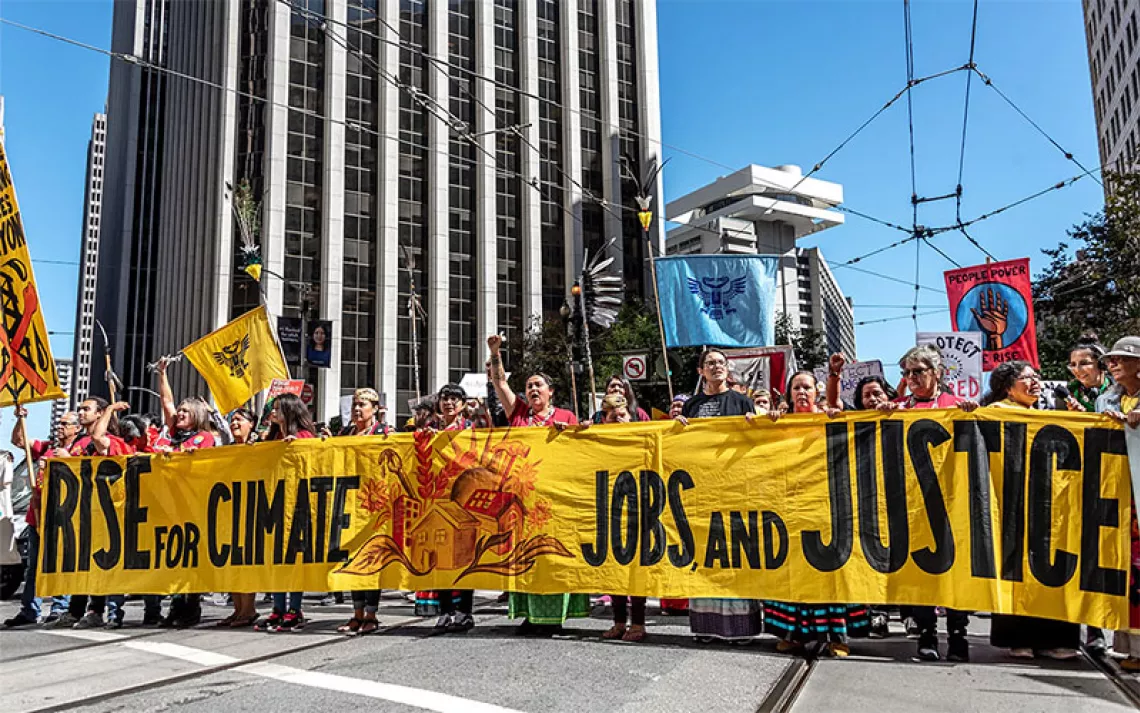We Need Fewer Disposable Neighborhoods and More Good-Paying Green Jobs
The clean energy economy can be a win-win-win

A line worker checks vehicles at the General Motors Hamtramck assembly plant in Hamtramck, Michigan. | Photo by Paul Sancya, AP file
Nicknames like the Motor City and Motown make clear that the auto industry built Detroit. Cars did a lot to give the neighborhoods in and around the 48217 zip code on the city’s southwest side another nickname too—Michigan’s most polluted zip code.
A Ford plant, a US Steel mill and, most prominently, a Marathon Oil refinery that’s the only one in the state and one of the nation’s largest have fouled the air for decades in what locals call the Tri-Cities. In all, the Environmental Protection Agency monitors more than four dozen polluters in the area that’s home to poor Blacks and Latinos.
In the mid-1960s, Interstate 75 dissected what was a vibrant neighborhood and added the fumes of 100,000 cars and trucks a day. Many of those residents trace their roots to the 13 original families that settled there in the Great Migration, and houses are a big part of neighborhood families’ wealth.
Residents of the 48217 have fought for decades to slow the pollution by protesting and appearing at public hearings. The corporate interests have won more often than not.
The city historically traded the promise of jobs for residents’ interests. Marathon promised 51 percent of jobs at the refinery would go to city residents when it won a $175 million tax abatement for an expansion in 2007; a decade later, just 6 percent of the workforce was from Detroit.
We’re at a moment when we can change these patterns, when places across the country like the Tri-Cities can get relief and we can stop creating them in the first place. The hundreds of billions that the federal government has committed to infrastructure and clean energy—more money than we spent sending astronauts to the moon—can do that.
For example, there’s $3 billion alone set aside for communities like 48217 that have felt the most environmental and climate harm. It’s not enough, but it’s a significant start.
When it comes to the auto industry, our country is spending heavily to speed the transition to electric vehicles, from a $9.2 billion loan the Energy Department gave Ford and its South Korean partner this summer to build battery plants to $7,500 tax credits for car buyers who choose new EVs. We’re lowering the cost of supplying the bigger demand for EVs that we are building for automakers at the same time.
It begs the question why Ford, General Motors, and Stellantis are trying to make the work to build EVs less desirable for their 150,000 employees represented by the United Auto Workers, whose contract expires in less than two weeks.
A critical part of the negotiations underway is the question of how workers in plants making EVs will be treated. It’s a question not just for this contract but for years to come as EVs become the standard for American car buyers.
The automakers are forming joint ventures to open battery plants where they don’t have to pay the wages that they do at vehicle assembly plants. The union points to the starting pay at an Ohio battery plant that’s half the top pay at gas-powered car plants. The companies also are placing new plants in southern states with right-to-work laws to avoid unions.
The people who make cars shouldn’t have to choose between a green, sustainable job and one that pays good wages they’ve negotiated. That’s not what American taxpayers expect in return for the incentives flowing to the auto industry.
 The Magazine of The Sierra Club
The Magazine of The Sierra Club



